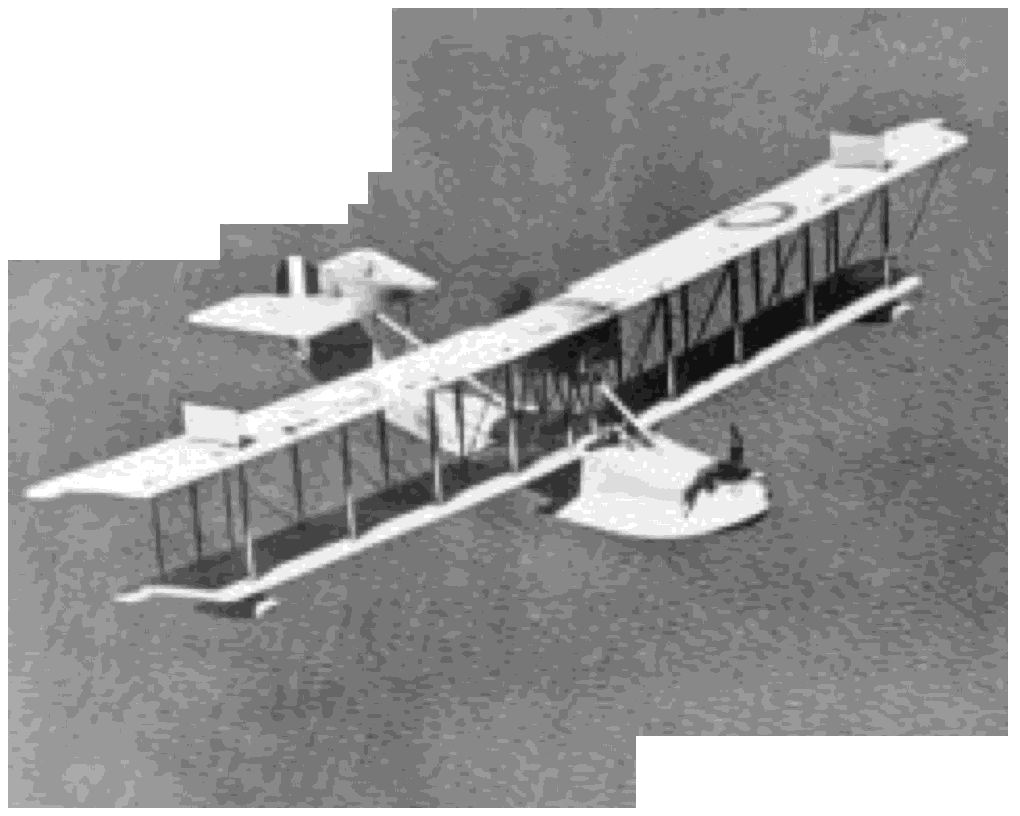
38
UNITED STATES NAVAL AVIATION
1910-1995
1918-Continued
Navy's first win in the Curtiss Marine Trophy Race, an
annual competition set up by Glenn H. Curtiss in 1915
to encourage seaplane development. The contest was
on the basis of miles traveled in 10 hours of flight,
with extra mileage credit for passenger load. In win-
ning, Rodman carried 11 passengers 670 statute miles
and received credit for 970 miles.
1919
23 January
Ensign Fitzwilliam W. Dalrymple and
Chief Machinist's Mate Frederick H. Harris took off at
NAS Miami, Fla., in a single-engine pusher flying boat,
HS-2L, and with benefit of special gas tanks, remained
airborne for 9 hours 21 minutes.
3 February
Captain George W. Steele, Jr., assumed
command of Fleet Air Detachment, Atlantic Fleet, on
board his flagship,
Shawmut
(CM 4), in the Boston
Navy Yard, Mass. Established for the purpose of test-
ing the capabilities of aviation to operate with fleet
forces, the new command marked the beginning of a
permanent provision for aviation in fleet organization.
Although all elements of the detachment were not
immediately assembled, its composition was:
Shawmut
(CM 4) flagship and tender, a seaplane squadron of six
H-16 flying boats under Lieutenant Commander Bruce
G. Leighton, an airplane division of three landplanes
under Lieutenant Commander Edward O. McDonnell
on
Texas
(BB 35) and a kite-balloon division of six
balloons on various ships and the
Shawmut
(CM 4),
under Lieutenant (jg) John G. Paul.
9 February
The submission of aerological data,
obtained at various naval air stations, to the U.S.
Weather Bureau for use in coordinated study of
weather conditions, commenced with the report sub-
mitted by NAS Pensacola, Fla.
17 February
The Fleet Air Detachment which had
completed assembly at Guantanamo Bay, Cuba, on the
15th, began operations with the fleet by participating
in long range spotting practice. On this day and in
subsequent exercises, the detachment gave a practical
demonstration of the capabilities of aircraft and of the
advantages to be derived from the coordinated
employment of air and surface units.
7 March
In a test at NAS Hampton Roads, Va.,
Lieutenant (jg) Frank M. Johnson launched an N-9
landplane from a sea sled making approximately 50
knots. The sea sled was a powerful motor boat
designed to launch an aircraft at a point within range
.
'
,
. ."
'
,
! " :.:... ,.,
:. :...
, .
HS-2L flying boat powered by Liberty motor 1053768
of the target and had been developed experimentally
at the recommendation of and under the guidance of
Commander Henry C. Mustin as a means of attacking
German submarine pens. The sea sled was manufac-
tured by Murray and Tregurtha of South Boston, Mass.
9 March
Lieutenant Commander Edward O.
McDonnell, piloting a Sopwith Camel, made the first
flight from a turret platform on a U.S. Navy battleship as
he successfully took off from the No.2 turret of
Texas
(BB 35), lying at anchor at Guantanamo Bay, Cuba.
12 March
The feasibility of using voice radio and
telephone relay for air to ground communications was
demonstrated as Lieutenant Harry Sadenwater, in an
airborne flying boat, carried on a conversation with
the Secretary of the Navy who was seated at his desk
in the Navy Department some 65 miles away.
13 March
The Chief of Naval Operations issued a
preliminary program for postwar naval airplane devel-
opment. Specialized types desired were fighters, torpe-
do carriers and bombers for fleet use; single-engine,
twin-engine and long distance patrol and bomber
planes for station use; and a combination land and
seaplane for Marine Corps use.
21 March
A gyrocompass developed by the Sperry
Gyroscope Company for the Navy was tested in an air-
craft. Although this particular instrument was not
found acceptable, this is the first recorded instance of
tests of this device which was later to prove an invalu-
able navigational instrument for long-range flight.
7 April
The Seaplane Squadron and
Shawmut
(CM
4) of Fleet Air Detachment left Guantanamo Bay,
 |
16 |
 |